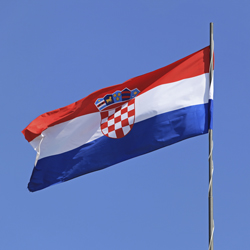Strengthening materials research capacity in Croatia
ssNMR can provide high-resolution information about the local structural environment in high-temperature conductors, quantum magnets, conducting polymers and carbon nanotubes relevant to the growing field of condensed matter physics. The Physics Department of the Faculty of Science (PDFS) at the University of Zagreb is a premier physics department in Croatia. Its 70 internationally renowned scientists and 660 undergraduate and graduate students conduct cutting-edge research devoted to solid-state physics and materials science. PDFS initiated the SOLENEMAR project to complement its current repertoire of expertise and instrumentation with an ssNMR spectrometer and the requisite specialised knowledge and techniques. EU funding has led to substantial reinforcement of the European Research Area (ERA) in NMR investigations of novel materials with unique electrical and magnetic properties. PDFS now boasts ssNMR equipment carefully selected for compatibility and cost effectiveness. Senior Croatian scientists and doctoral students received expert training over a total of 25 months at EU partner laboratories. Numerous eminent EU scientists were hosted at PDFS providing intensive discussions and technical support in the development of software for data acquisition and processing and in experimental procedures. Finally, a Croatian post-doctoral student completed a one-year term at the Laboratoire National des Champs Magnetiques Intenses (LNCMI), Grenoble. Funding was also used to support the salaries of current and new scientists. SOLENEMAR attracted widespread media coverage and conducted two international workshops for NMR experts. PDFS scientists attended numerous international conferences at which they presented their research, leading to global visibility. Industry and small and medium-sized enterprises (SMEs) were the target audience of two series of seminars organised by PDFS under the auspices of SOLENEMAR. Overall, the new ssNMR laboratory at PDFS has become internationally recognised and established important ties with EU partners and the industrial community. Its strengthened research capacity will no doubt have important impact on the ERA with regard to ssNMR experimentation as well as on the careers of Croatian scientists.



